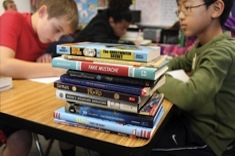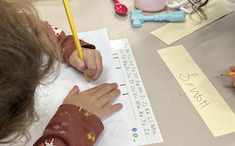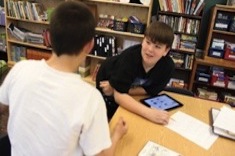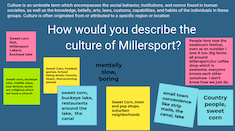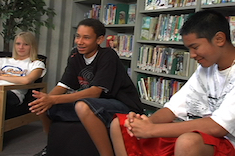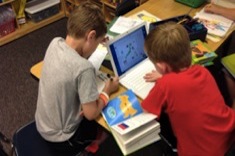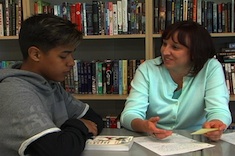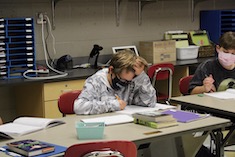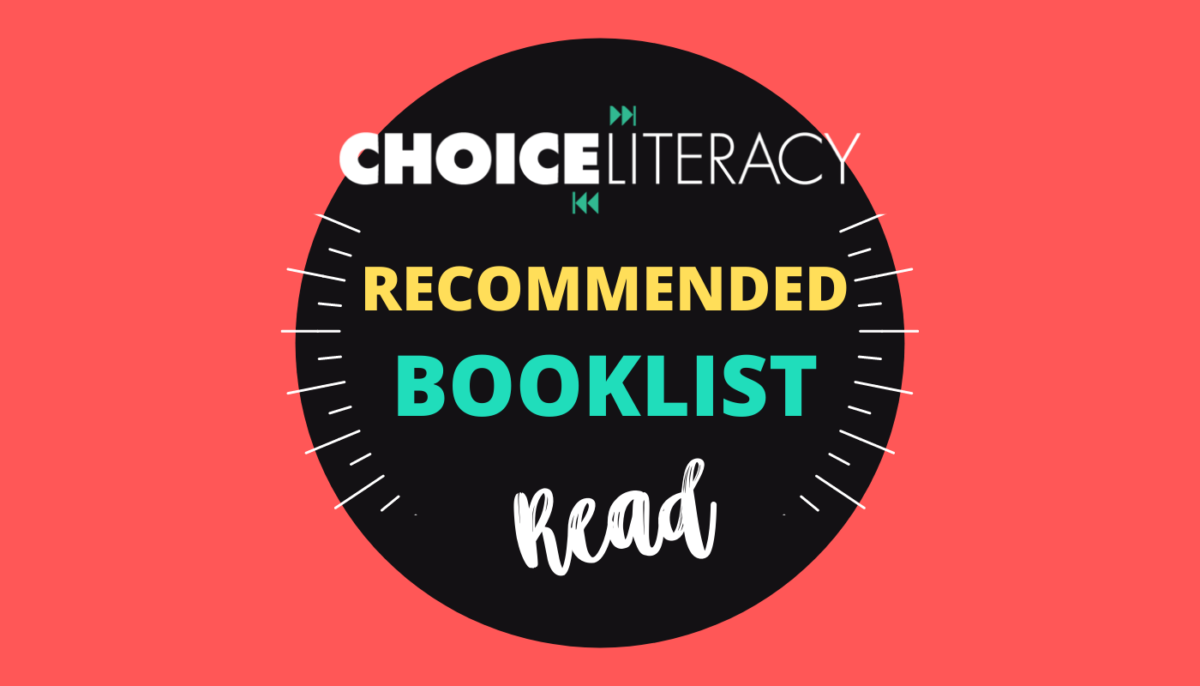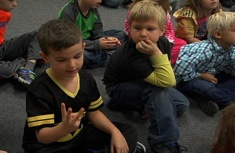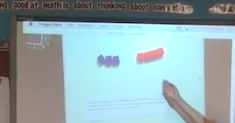9th
Latest Content
Does Gender Impact Reader Engagement?
Gretchen Schroeder questions whether the protagonist’s gender influences her students’ engagement with a text. Using the dystopian novel Legend, which has two protagonists of different genders, Gretchen gathered feedback from her students. What she discovered was that a reader’s engagement with a text has more to do with empathy than with gender. You’ll love Gretchen’s new way of selecting whole-class texts for her students.
Considering Positionality and Developing New Sight Lines
Gretchen Schroeder shares a powerful approach to reading response to help students consider their positionality in a scene. Your identity, your thoughts, and your experiences influence the way that you relate to a text. This is your positionality as a reader, and it’s important to consider your positionality within a text because it explains how and why we come to certain conclusions as we read.
Partnering with Families on Reading
Tara Barnett and Kate Mills share ways to make families partners in the pursuit of creating lifelong readers. They share research that makes a case for “just” reading and compelling suggestions for families to support their children’s reading lives.
How Long Does This Have to Be?
Students often question how long a piece of writing needs to be. Gretchen Schroeder shares a strategy that changed the focus of writing projects from length to meaning.
Putting Together the Pieces of a Classroom (Classroom Organization)
When Julie Cox moves into a smaller classroom, she realizes that to make it a room where students learn and thrive, she needs to shift her mindset. Rather than simply putting things where they fit, she asks three questions to make intentional decisions that will support learning.
From a Blank Canvas to a Community Space
Jodie Bailey approaches setting up her math classroom as a blank space with an invitation for students to engage in establishing identity, creativity, and collaboration.
Emoji Book Talks
Jen Vincent outlines a twist on book talks—the Emoji Book Talks. This is a fast and fun way for students to share books and build their Books to Read lists.
Middle School Reading Routines
Tara Barnett and Kate Mills share ways to establish middle school reading routines. They share two downloads to help support reading routines in all classrooms.
Small-Group Conversations About Independent Reading
Jen Vincent scaffolds conversations to help students discuss their independent reading books in small groups…even when everyone is reading a different book! Download and print a copy of the guide to support students in their small-group conversations.
It’s Time to Admire: Sharing in the Beauty of Students’ Writing
Heather Fisher shares a process to help teachers learn to admire student writers and find the beauty in their work.
QuickTake: Choice in Making Plans for Writing
Ruth Ayres shares the importance of giving students choice when planning their writing projects.
Writing from the Heart
Kate Mills and Tara Barnett pour their hearts into teaching writers, but when Tara loses her family dog, she is reminded that writing is the thing that helps us understand what’s most important.
Three Ways to Engage Your Students in Reading and Writing Poetry This Spring
Gretchen Schroeder offers three poetry-writing activities to take the pressure off the writing process by using another poet’s structure and/or words as a starting point. You’ll be amazed by how deep and personal the resulting poems can become. Download a PDF for students to collect lines for a cento poem.
Authentic Audience
Julie Cox offers three questions to determine authentic audiences for high school students to share work.
It’s the Final Countdown: Using Chunking and Timers to Scaffold Reluctant Writers
What do you do when students won’t write during class? Gretchen Schroeder offers a creative, practical, and effective solution.
Rural Communities
Julie Cox explores the differences in her experiences of teaching in the city of Louisville and teaching in a rural community. All teens have similar universal experiences, yet Julie outlines some considerations for rural students.
Rural Matters: Revealing Perceptions and Celebrating Roots
Gretchen Schroeder addresses the negative and positive perceptions of rural people with her high school students through readings, discussions, and analytical writing. Download a guide for Critical Rural Perspective Analysis to use with your students.
Assessing High School Readers
Secondary instructional coach Holly Wenning shares ways to assess high school readers.
Assessment in Classroom Book Clubs
In this third installment about classroom book clubs, Leigh Anne Eck shares options for robust assessment as well as answers to some frequently asked questions.
Letting Informational Mentors Lead the Way
Tara Barnett and Kate Mills share a practical process for using an informational mentor text to support students as readers and writers. Download a note sheet to support students in noticing text structure.
One-Page Reading Response: A Simple Approach to Complex Assessment
Christy Rush-Levine uses one-page reading responses as a simple culminating activity to provide closure for book clubs. However, the data they offer about readers is far from simple.
Implementing Classroom Book Clubs (Part Two)
In this second installment about book clubs, Leigh Anne Eck shares procedures for book club meetings, as well as discusses the importance of standards and instruction. Download a discussion guide.
Teaching Readers Rather Than Teaching Books
Secondary instructional coach Holly Wenning shares her own paradigm shift of teaching readers rather than teaching books, and encourages all teachers to consider the importance of putting students before books when planning literacy instruction.
Getting Started with Classroom Book Clubs (Part 1)
In the first installment of a three-part series, Leigh Anne Eck clearly lays out how to get started with book clubs. Included is an editable planning bookmark to give students more ownership of their reading schedules.
Less Is More: Using Novels in Verse in the Classroom
Gretchen Schroeder explains the reason why she believes requiring high school students to read novels in verse during independent reading time is worthwhile for their reading identity and developing more sophisticated understandings of literary analysis.
Anthologies to Diversify Middle School Reading Instruction
Christy Rush-Levine offers a booklist of anthologies to diversify middle school reading instruction. In this robust list, everyone will find a new addition to use as a whole-class text.
The Importance of the Workshop Model in High School
Instructional coach Holly Wenning shares the importance of the workshop model, and especially work time, for high school students. See the transition from minilesson to work time in a 10th-grade English class.
Still Thinking: An Opportunity to Pause and Think Deeply
Jodie Bailey provides a structure to give students more time to think through ideas and problems. By using this practice, students gain ownership of their learning.
Renewing Energy in the Classroom
Gretchen Schroeder finds ways to increase students’ energy for doing work in her classroom. Her practical tips are useful for all students.
Math Debates: A Powerful Sense-Making Routine
Jodie Bailey shares a powerful practice of math debates for students to explore a problem with discussion and evidence to discover the correct solution.
Browse Content By
Type
Category
- Assessment Tools
- Big Fresh Archives
- Booklists
- Choice Numeracy
- Classroom Design
- Common Core
- Community Building
- Conferring
- Content Literacy
- Digital Literacy
- English Language Learners
- Equity
- Family Relations
- Free Samples
- Guiding Groups
- Leadership
- Literacy Coaches
- Mentor Texts
- Minilessons
- New Teacher Mentors
- Podcasts
- Poetry
- Quote Collections
- Reading Strategies
- Self Care
- Struggling and Striving Learners
- Talking and Listening
- Teacher Study Groups
- Teaching Reading
- Teaching Writing
- Word Study and Vocabulary
Author
- Melissa Quimby
- Nawal Qarooni
- Gwen Blumberg
- Julie Cox
- The Lead Learners
- Hannah Tills
- Josie Stewart
- Ruth Metcalfe
- Mallory Messenger
- Becca Burk
- Jodie Bailey
- Vivian Chen
- Mary Brower
- Tiffany Abbott Fuller
- Stephanie Affinito
- Ruth Ayres
- Leigh Anne Eck
- Heather Fisher
- Shari Frost
- Julie Johnson
- Suzy Kaback
- Gigi McAllister
- Shirl McPhillips
- Melanie Meehan
- Cathy Mere
- Debbie Miller
- Tara Barnett and Kate Mills
- Tammy Mulligan
- Dana Murphy
- Bitsy Parks
- David Pittman
- Brenda Power
- Heather Rader
- Matt Renwick
- Mandy Robek
- Christy Rush-Levine
- Gretchen Schroeder
- Jen Schwanke
- Brian Sepe
- Katherine Sokolowski
- Stella Villalba
- Jennifer Vincent
Grade Level
Choice Literacy Membership
Articles
Get full access to all Choice Literacy article content
Videos
Get full access to all Choice Literacy video content
Courses
Access Choice Literacy course curriculum and training

